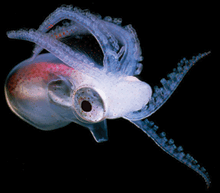
So I’ve processed my second “successful” transformation from frozen stocks (i.e. counted the colonies on the different plates), and things appear to have gone okay with a huge caveat.
I again appear to have WAY too many viable cells (CFU) and the apparent transformation frequencies of single markers (KanR or NovR) were quite low. Examining the double transformants (cells that picked up both KanR and NovR) implies that only a small percentage of cells were competent (even given linkage between my markers), which makes sense, if I’d drastically overshot the cell density before switching to M-IV.
What to do? I simply need to start over. Technical problems of my dilutions and plating notwithstanding, I’ve still got a pretty poor competent cell culture. Nothing of any utility. Try try again...
Full results follow:
For Experiment MAP7 -> Rd #2.2:
CFU: 6.1 e 10 / mL
KanR: 2.4 e 6 / mL
NovR: 2.8 e 5 / mL
KanRNovR: 8.9 e 3 / mL
Okay, so the CFU numbers are again ridiculously off compared to expectations (expect perhaps a few million per mL). Obviously something is seriously wrong. One possibility is that the way I did the serial dilutions was extremely far off. This doesn’t appear to be entirely the case, since for the mid-range dilutions with a reasonable number of colonies, there were ~10-fold differences between 10-fold dilutions. Here are my colony counts for 100 uL plated (for plus MAP7 DNA; the NO DNA CONTROL worked just fine... no transformants):
CFU:
1e-8: 61 colonies
1e-7: uncountable (not just density, but spreading)
1e-6: uncountable (“ “)
KanR:
1e-5: 6 colonies
1e-4: 26 colonies
1e-3: 236 colonies
NovR:
1e-5: 1 colony
1e-4: 5 colonies
1e-3: 28 colonies
KanR NovR:
1e-3: 1 colony
1e-2: 11 colonies
1e-1: 89 colonies
Certainly not perfect, but also not a seriously dramatic error caused by me not changing tips along my serial dilutions. But it could be much worse for my initial uncounted dilutions. So going from the undiluted M-IV culture to the first couple of serial dilutions may have put far too many cells into the 1e-2 dilutions onwards, but now that they’d been somewhat diluted, maybe the error wasn’t too dramatic. Regardless, I will certainly be changing tips in all future serial dilutions, just for good measure.
Another (not mutually exclusive) possibility is that I had dramatically overshot the cell density going into M-IV. I think this must be part (but not all) of the problem. I’d let the cultures go for 4.5 hrs instead of the typical 2.5 hrs, so despite my taking an OD measurement of ~0.26, perhaps it was really higher. I took the OD straight without diluting. The blank I used was correct (from the original sBHI I used to grow up the cells, made that morning), but perhaps I’m doing something else stupid.
And the evidence suggests that I’ve got quite a lot more double transformants than expected. We do expect that the markers are linked, so some excess is expected, but I don’t think its on the order I’m seeing here.
KanR / CFU: 3.9 e -5
NovR / CFU: 4.6 e -6
KanR NovR / CFU : 1.5 e -7
Expected: 1.8 e -10
Excess (o/e): 822X !
Given that we expect transformation rates on the order of 1 / 100 and the extremely high excess of double transformants, these results imply that only a tiny fraction of the cells in my competent cell preparation were actually competent.
Another way that ignores CFU:
KanR NovR / KanR: 0.38%
KanR NovR / NovR: 3.18%
Thus, the apparent transformation rate of NovR among KanR colonies and the converse are dramatically higher than what I’d expect for the independent markers (even if only trusting the CFU counts with a couple orders of magnitdue). Even with linkage, this seems pretty excessive.

No comments:
Post a Comment